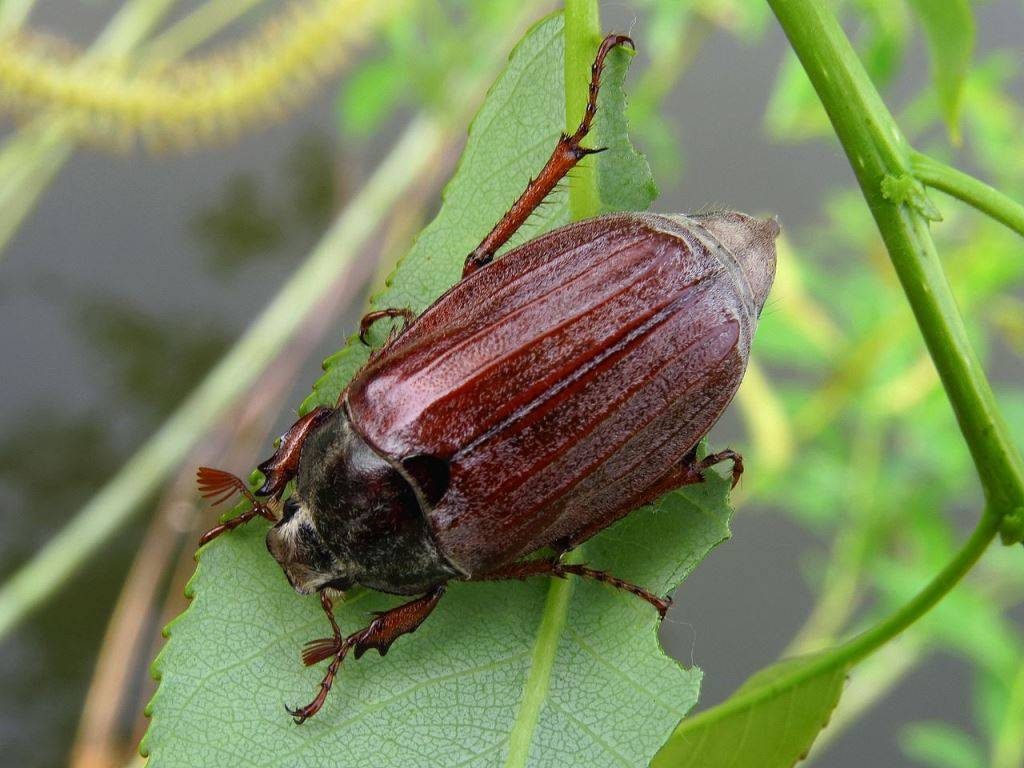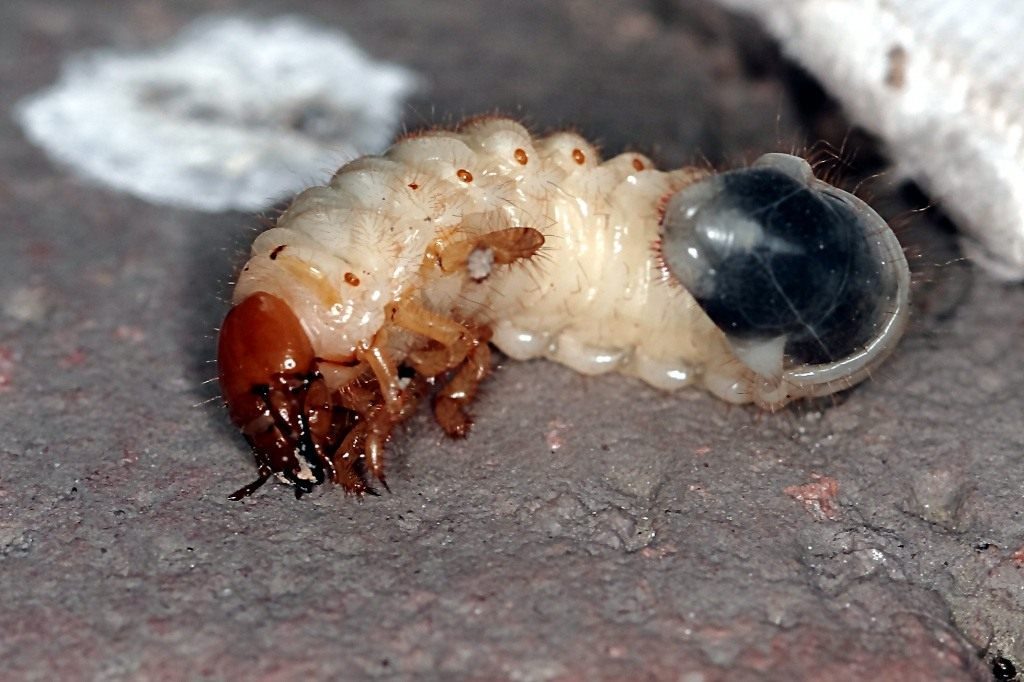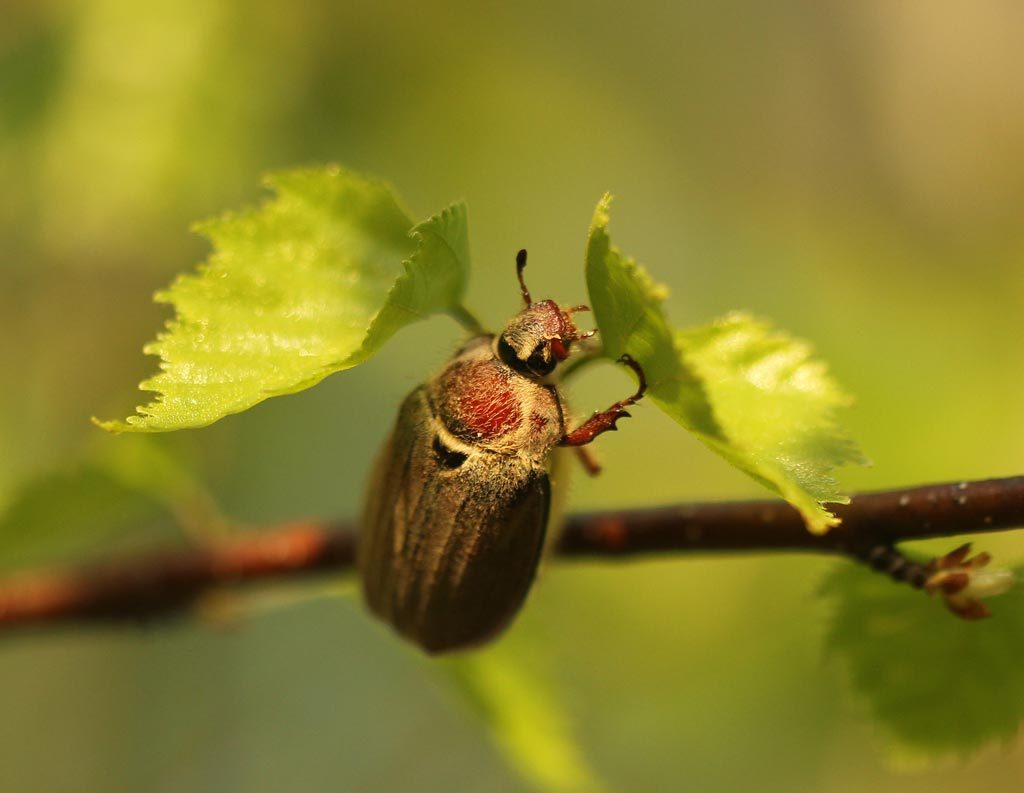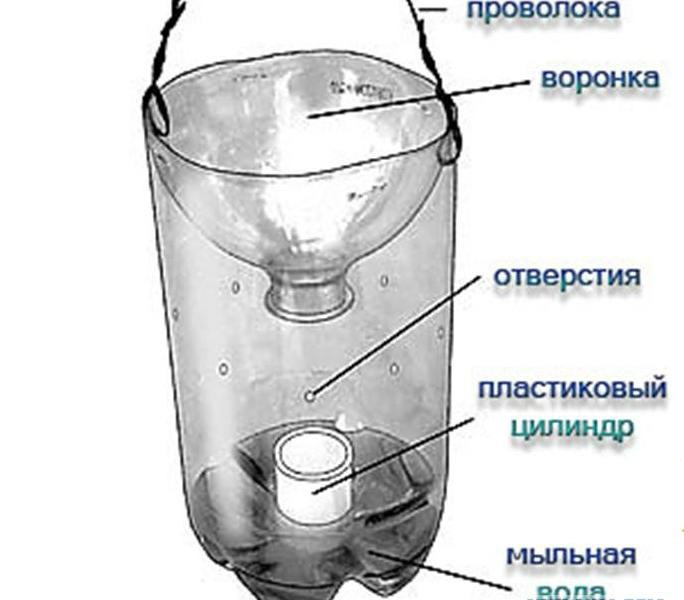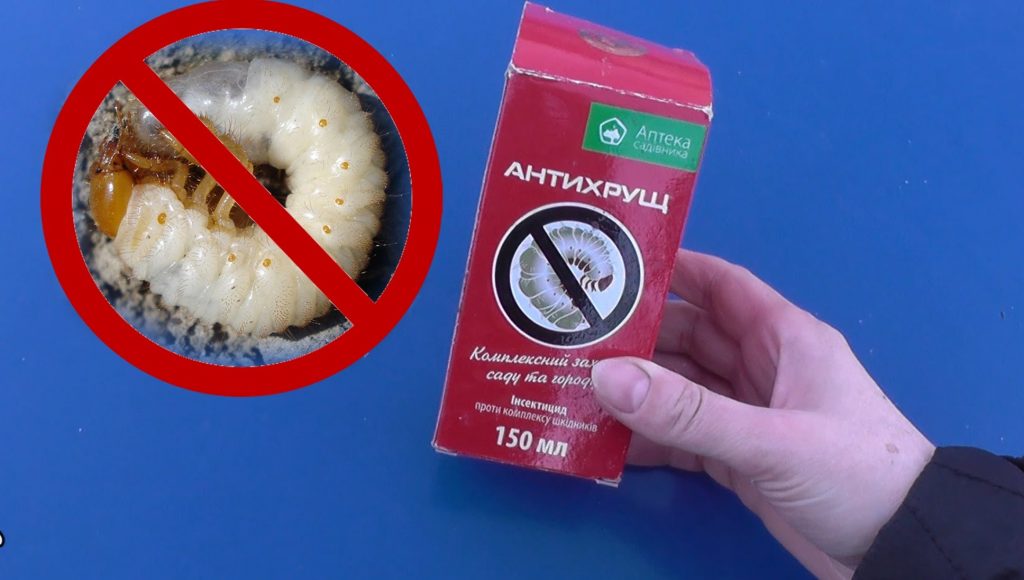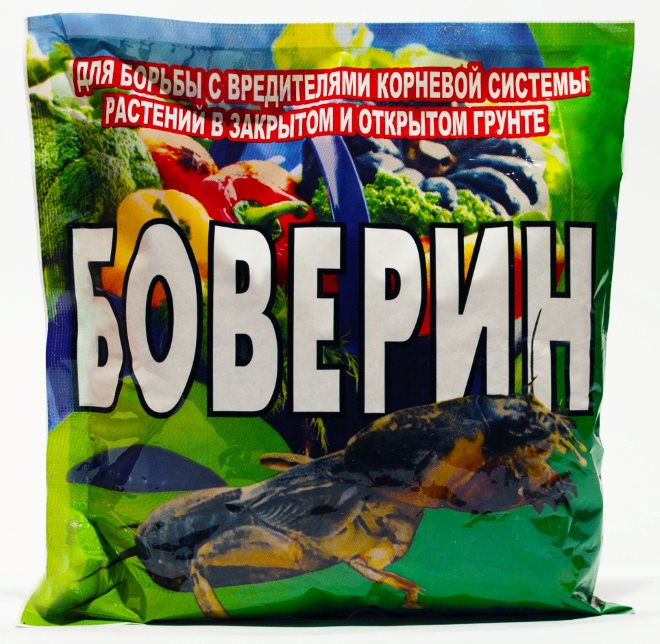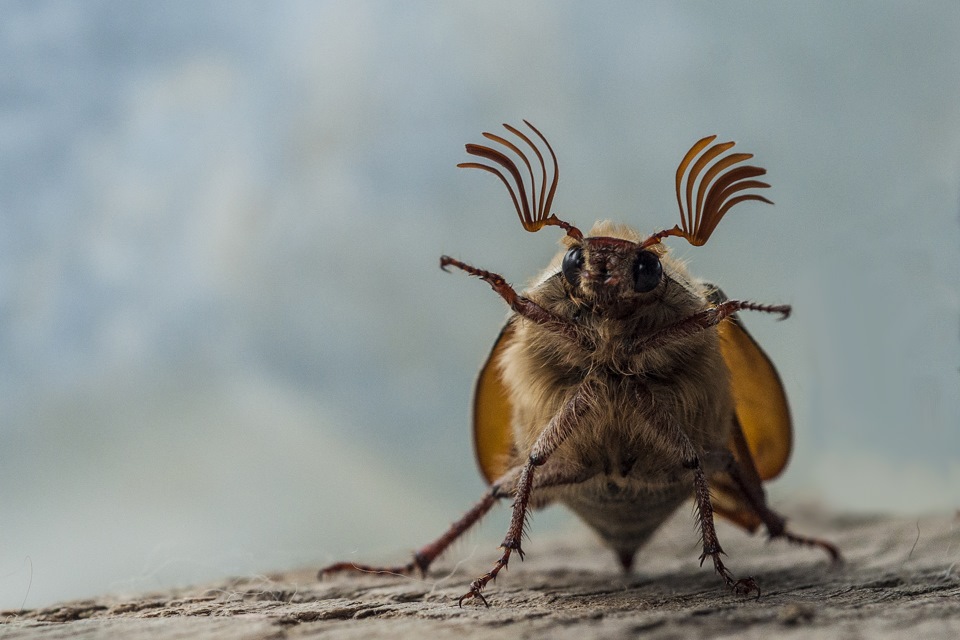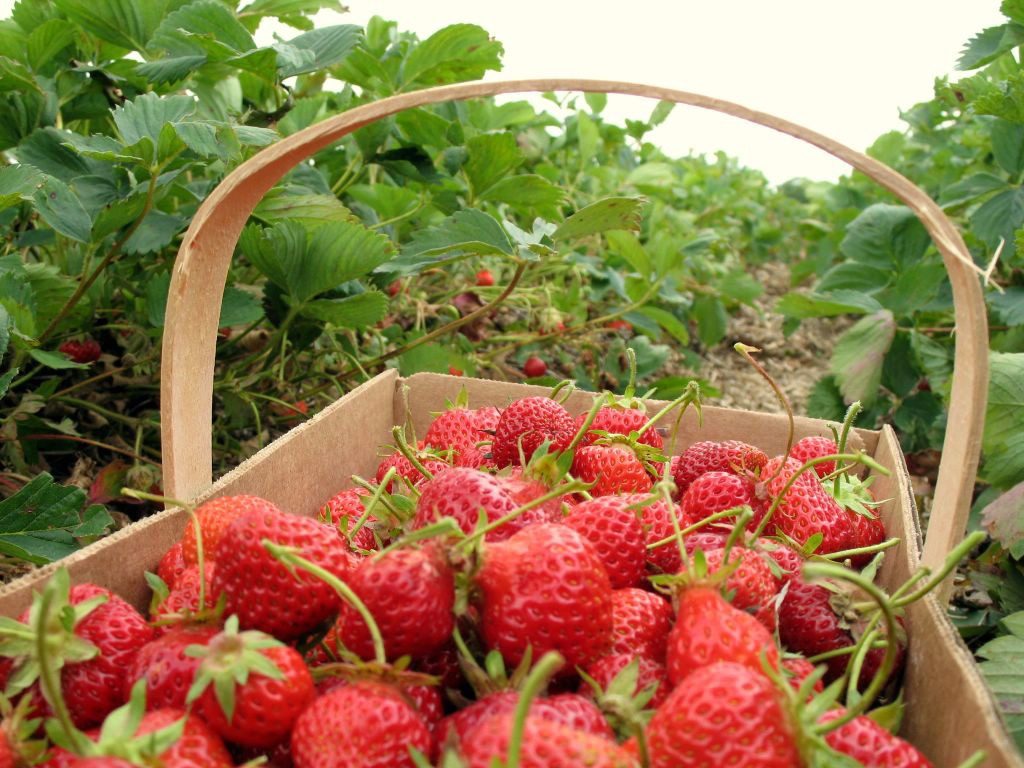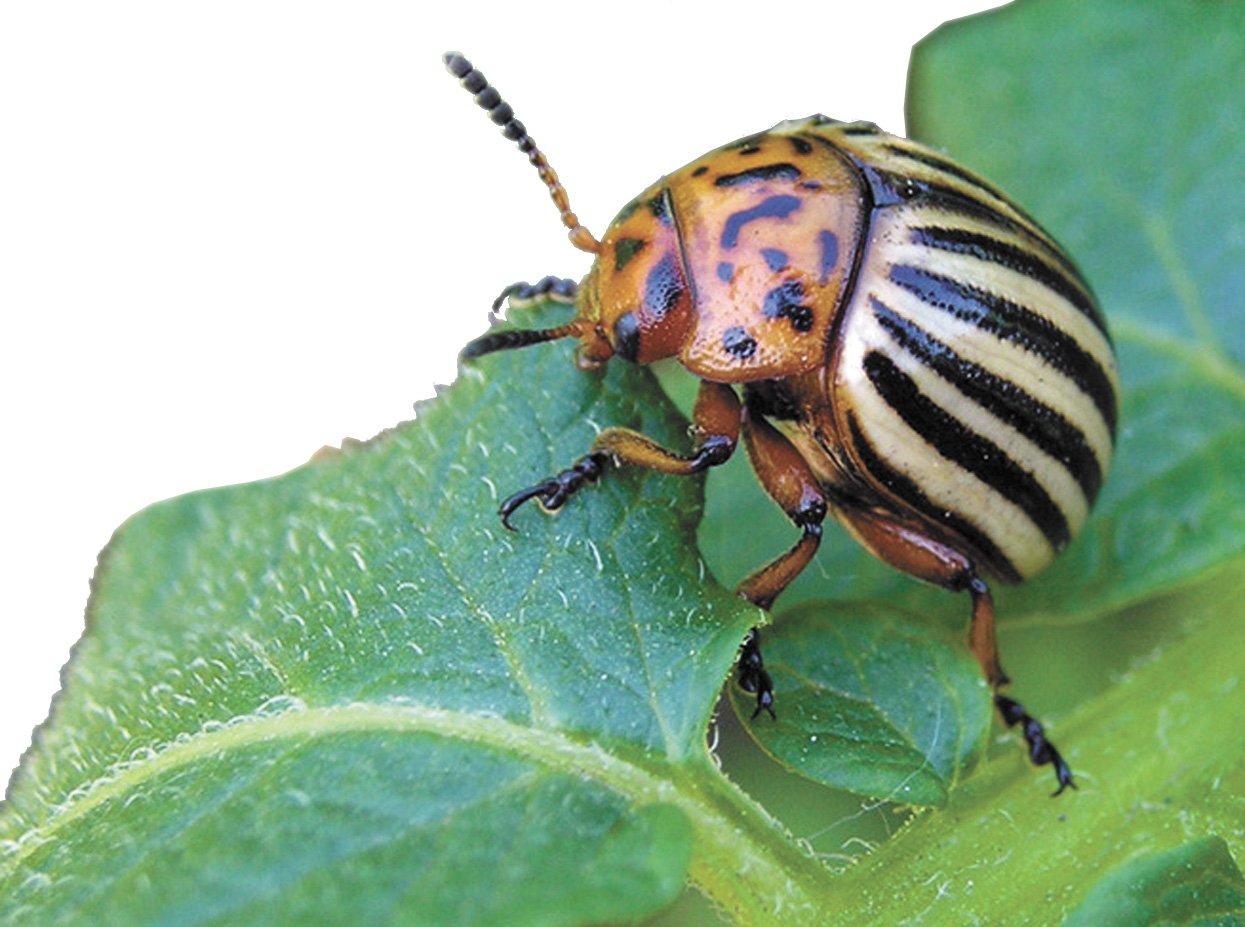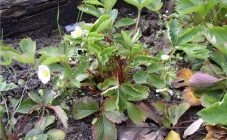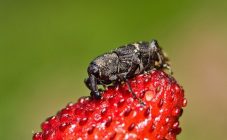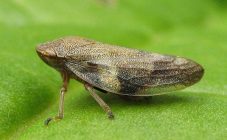Content:
May beetles are very common in Russia. They begin their activity when they appear in the spring, namely in the second half of April. If you take the genus of these beetles as a whole, then in its composition you can count 24 species, about a third of them live on Russian territory.
If you carefully observe the soil surface in spring, you can see with the naked eye how these beetles crawl out after wintering. Often in the evening in spring, the buzz of insects is heard near the plants during flowering, this is none other than the May beetle. They spend their days sitting on the leaves of plants, firmly clinging to them with their legs. It will not be superfluous to note that all, without exception, varieties of these insects bring harm to crops.
Description of the beetle
May beetle has a fairly solid size for an insect. Its length can be from 1 cm to 3.5 cm. The body of the beetle is either oval or almost round in shape, and there are scales on it. Longer hair can be observed on the belly and on the head. The females of the May beetle are even larger than the males.
The beetle is black or brown in color. In the southern regions, you can often find the black May beetle in dark forests, with no possibility of light penetration. Insects with a different color are found in the northern regions, where the vegetation is not too abundant.
Harm to plants
These beetles are very fond of gnawing and eating up the leaves of trees and garden crops. They like flowers, as well as young ovaries. Sometimes the trees after their intervention can be completely bare.
May beetle larvae, or beetle, cause the greatest damage to garden crops and garden plants. Their length is about 5 cm on average, they can be seen in a condition that is called sickle-shaped, they are quite well-fed, white, but not pure. They undermine the roots of garden plants with their powerful mouth apparatus, they are even capable of gnawing them.
At a young age, the larvae do not do any harm to the garden, because at this time they feed exclusively on grass and humus. But already when they reach 2 years old, they eat the roots of plants, which are subsequently prone to wilting and often death. The larvae like tubers, as well as planted strawberries and seedlings. The peak of their gluttony and, accordingly, harm falls on the age of 4.
A pest can find food quite easily. In this he is well helped by well-developed eyesight and smell. With strong legs, the May beetle manages to dig the soil without difficulty.
According to all physical laws, it is believed that the beetle cannot even rise into the air, but, in spite of everything, it even flies at a rather good speed for an insect. Even its substantial weight does not interfere with this.
Plant spread
The insect spreads through different cultures by migration. If the summer cottage is located next to some plantings or forest, then, most likely, the owner can expect the appearance of these pests and prepare in advance for their arrival.
May beetle larvae migrate in an upright position, so it is not always easy to find them in the ground. They won't show up until next year.
Plants when damaged by beetle have leaves with holes, eaten on the sides. Also flowers and ovaries look gnawed. The culture lags far behind in growth and can completely fade. Herbaceous plants come out of the ground very easily with little effort. It is necessary to find the beetle itself or its larva on the culture in order to understand exactly who the pest is.
The fight against the beetle and its larvae is necessary. It certainly needs to be removed, otherwise the consequences can be very dire. The damage to plants from the insect is significant. Getting rid of the pest is considered not too easy, due to the presence of the beetle deep in the ground, so an integrated approach is needed in this problem.
Beetle fighting
How to get rid of beetle larvae on strawberries or strawberries, for example, Victoria? First of all, an important procedure in agricultural technology is the usual assembly of pest larvae in the autumn and spring when digging the soil.
When the temperature is not too low, the larvae are not very deep in the ground. In the fall, they have not yet begun to move into the soil for wintering, and in the spring they begin their movement towards the root systems of plants that are not too deep. At these moments, they can be easily found, collected and destroyed.
To attract them, planting of certain plants is used, such as dill, fennel, cumin and others. They also like planting sunflowers.
When it is not possible for any reason to constantly look after the site, you can make it turf. This is done so that the females of the beetle cannot get deep into the soil and, accordingly, the laying of eggs does not occur.
In order to avoid the pest, planting insecticides is used. Insect larvae do not like the large amount of nitrogen contained in the earth. They simply leave such places. You can plant peas, beans and beans next to strawberries. In autumn, their green parts are dug up with the ground, receiving fertilizer.
The smell of mustard and lupine is poorly tolerated by the May beetle. There are no weeds near lupine, and this is unacceptable for the pest. Beetles prefer to choose another location away from these plants. Mustard is also a good digging fertilizer that destroys the beetle larvae in the ground.
The larvae do not like chlorine compounds very much. A little bit of bleach crumbles when digging a site to destroy the May beetle larvae.
Also, when the temperature has reached an indicator sufficient for a comfortable departure of beetles, in the morning they can be shaken off, collected and destroyed. Plus, they use a kind of trap, leaving piles of dung, in which the females will place the eggs they are laying.
Chemical methods
When the owner begins to think about how to deal with the beetle larva on strawberries, it is not a very good solution to use chemicals in his garden, but when other, more gentle methods did not have the proper effect on the pest, they resort to using them to save the strawberries from the larvae ...
Of the means of chemical action, the most effective are distinguished, such as Zemlin or Pochin. These are insecticide preparations used in summer. They are placed in the soil at a shallow depth in June. At this time, the pest is near the surface. These preparations are good for killing juvenile larvae that eat humus.
Contact, intestinal preparations Aktara, Vallar are also isolated from chemical agents. They can process the root system of plants. They are also used for introduction into the ground in dry form and in the form of solutions.
Antichrushch means has a long lasting effect on insects. It is a concentrate that is proposed to be diluted into a suspension. This solution should be watered over the roots of plants.
Plus, gardeners use ammonia water against pests. Ammonium nitrate is dissolved in a bucket of water and the area for future planting of strawberries is watered a few months before the planned planting of berry bushes.
When a decision is made to use chemical agents in the fight against May beetle larvae on strawberries, you must remember to strictly follow the instructions attached to such drugs. This is important both when preparing the solution and during the application. In no case should the plants themselves be treated with soil preparations. The overwhelming majority of summer residents prefer to protect their plants using more environmentally friendly methods.
Biologicals
Of these drugs, those that rid strawberries from a pest at one of the first developmental stages are popular. These products are based on a small worm called a nematode. It will be in the soil and eat harmful larvae. An example of such a remedy is the drug Nemabact.
In just two days, the worm penetrates directly into the beetle larva itself. The most important thing is that absolutely no harm is brought to anyone, neither plants, nor beneficial microorganisms, nor, even more so, a person.
Traditional methods
In the fight against beetle on strawberries, folk methods are often used. Among the large number of such methods, one of the most effective is the capture and destruction of adult beetles. This helps because the female lays up to 70 eggs.
Added to this is the ability to use a sticky fly repellent. In those places where a large number of insects have been seen, they put newspapers smeared with a similar substance for the beetles to stick.
Also, some gardeners use light traps that attract the beetle. Usually this is some kind of container, the walls of which are smeared with a sticky substance.
How to deal with strawberry crunch with folk remedies? To scare off the may beetle, you can use infused onion peels. This means watering the beds.
An iodine solution is also used. Dissolve 15 drops in a bucket of water and water the strawberry bushes, being careful not to get on the leaves of the plant. After that, May beetles in this area can not be observed for a long time, more precisely, about two years. Also iodine solution is used for watering just before planting strawberries. After such watering has been done, you can plant the bushes after 3 or 4 days. This time period is needed in order not to burn the root system of young strawberry bushes. It is important to calculate the dosage and not exceed it.
Salt solution is another folk remedy in the fight against this pest. In a 10-liter bucket of water add 200 g, preferably coarsely ground, salt and alcohol about 2 tablespoons. Such a remedy also effectively helps with preventive measures.
There are a number of other folk remedies:
- Infusion of dried white acacia bark;
- Infusion of sunflower flowers;
- Boiled poplar leaves;
- Infusion of walnut leaves.
Preventive measures
How to get rid of the beetle on strawberries worries all summer residents. But it is better to carry out preventive measures that can completely protect the planting from the appearance of the pest. Such measures prevent the appearance of beetle larvae or prevent a repetition of past infection of the site. To carry out such activities, it is recommended:
- Strawberry aisles are treated with karbofos;
- The landing site is watered with diluted ammonia;
- The land should be mulched periodically.
What ways to choose
If we compare all the above methods of struggle, it should be noted that many experts recommend gentle methods of dealing with May beetle larvae on strawberries to novice gardeners. This opinion is shared by many experienced summer residents. Chemicals should be used only in extreme situations and with great care.
The best solution is, of course, prevention, which can help prevent the pest from entering the berry plantings, as well as planting appropriate plants nearby and attracting beneficial animals and birds that destroy insects.
There are many ways and means for combating beetle larvae on strawberries. The main thing is that when an infection is detected and at the first not very successful attempts to save plantings, do not give up and try to combine the available methods. Then the number of parasites will decrease significantly, or they will completely disappear.
